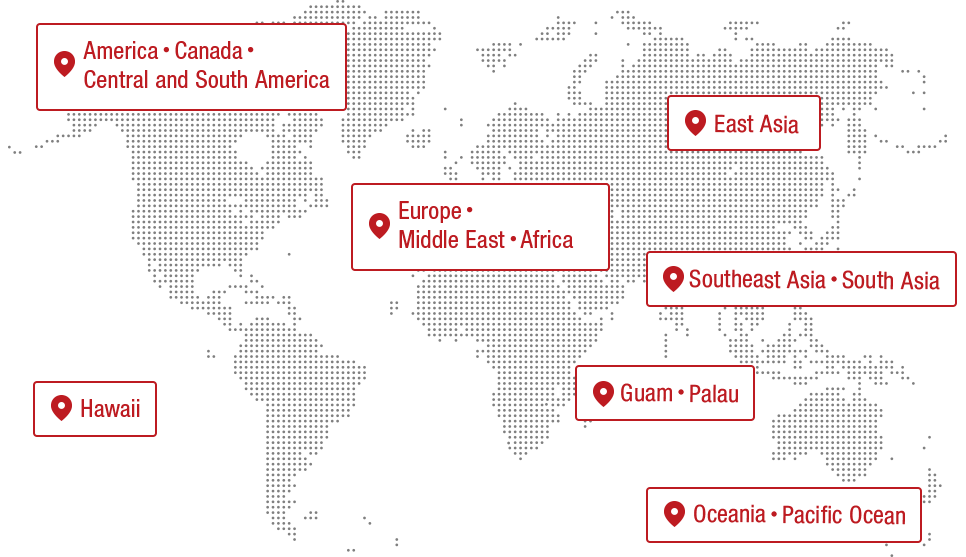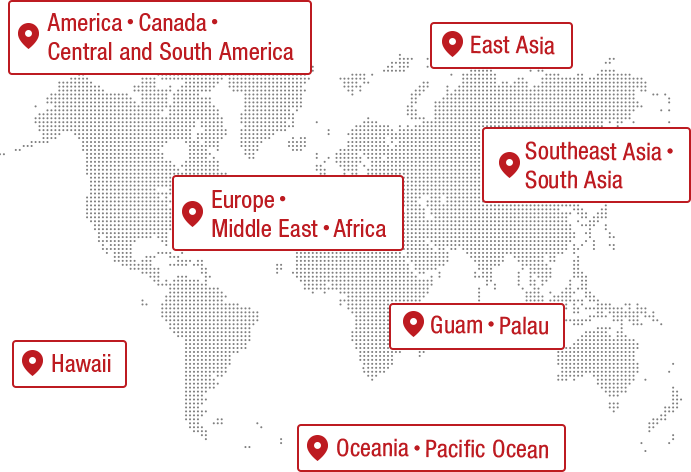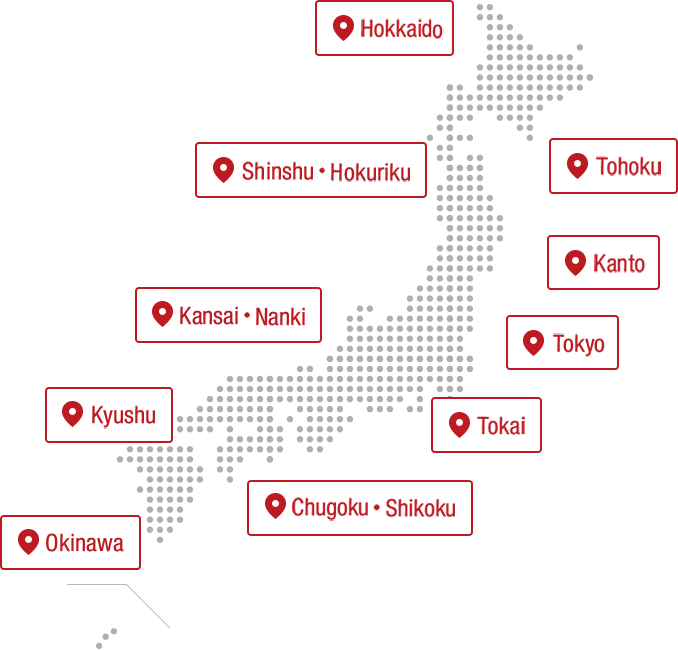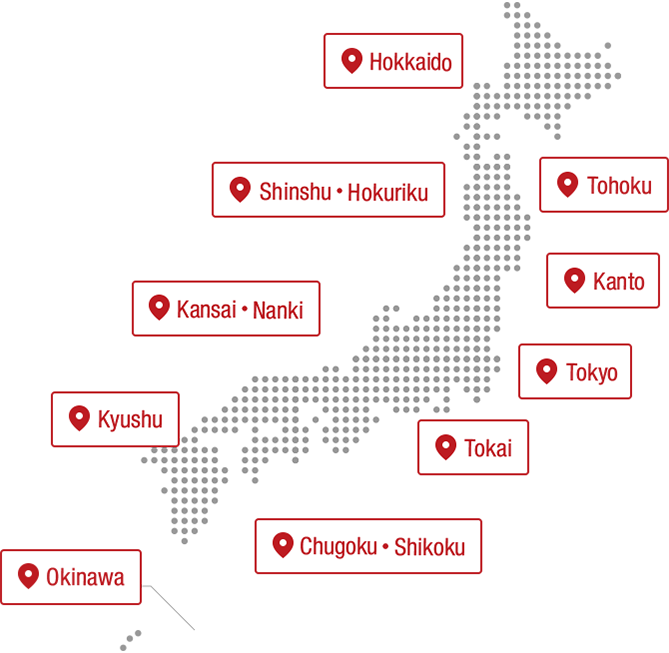*Prices include tax.
INDEX
What are the three major soba noodles in Japan? Learn about their differences and characteristics
A must-visit on your trip! Japan's top three soba restaurants
- [Wankosoba] Try your hand at breaking records at Soba Restaurant Azumaya
- [Wankosoba] Yabuya, loved by literary masters
- [Togakushi Soba] A special feeling of eating soba at a temple lodging "Togakushi Shrine Temple Lodging Irori Soba Restaurant Tsukiyama"
- [Togakushi Soba] Sobanomi, a popular restaurant loved by locals
- [Izumo Soba] The famous and venerable restaurant "Kenjo Soba Haneya Main Store"
- [Izumo Soba] "Soba Restaurant Tanakaya" is a great place to stop by after visiting Izumo Taisha Shrine
What are the three major soba noodles in Japan? Learn about their differences and characteristics
Soba is a food that allows you to feel the unique characteristics of each region, whether it is for events such as New Year's Eve or moving, or local soba. Among them, "Wankosoba" from Iwate Prefecture, "Togakushi soba" from Nagano Prefecture, and "Izumo soba" from Shimane Prefecture are well known nationwide and are known as the "Three Great Soba of Japan."
There is no clear reason as to how the three great soba noodles in Japan were decided. Some sources state that "Hegisoba," a local dish of Niigata Prefecture, is one of the three great soba noodles in Japan, but generally, "Wankosoba," "Togakushi soba," and "Izumo soba" are called the three great soba noodles.
We will introduce the characteristics of Japan's three major types of soba, each with its own unique color, flavor, and eating style.
"Wankosoba" (Iwate): Entertaining and full of history
Wankosoba is a local dish from the area around Morioka and Hanamaki cities in Iwate Prefecture. The bowl is filled with a mouthful of soba noodles, and once you've finished eating, the waiter will add more soba noodles to your bowl.

iStock/PHOTON09
There are two theories about the origin of Wankosoba: that it originated in Hanamaki or Morioka.
The Hanamaki theory goes that when the first lord of Morioka, Nanbu Toshinao, stopped in Hanamaki on his way to Edo, he liked the soba noodles served in a flat bowl so much that he had several refills.
The Morioka theory is said to have spread when the then Prime Minister Hara Takashi returned to his hometown of Morioka, ate some soba noodles in a wanko (a wooden bowl in the Iwate dialect), and remarked, "Soba noodles are best eaten in a wanko bowl."
What all of these have in common is that originally these regions had the custom of treating guests to soba. It is thought that the origin of wankosoba is when freshly boiled soba was served in small portions in bowls to serve a large number of people at the same time.

Speaking of wankosoba, the way to eat it is also unique. In Morioka, you eat it at a good pace while shouting "Hai, janjan" or "Hai, dondon," and when you're full, you finish by closing the lid of the bowl.
However, you don't necessarily have to eat it quickly. You can also take your time savoring the soba with condiments such as spring onions, grated yam, bonito flakes, and seaweed. Depending on the store, you can enjoy soba with a wide variety of condiments such as sashimi and wild vegetables.
It is said that 15 bowls of wankosoba equals the amount of one bowl of kakesoba, and the all-time record in the All Japan Wankosoba Championship, a 15-minute eating contest, is an astounding 632 bowls.
Nowadays, many people may think of wankosoba as a dish for big appetites, but the original purpose of wankosoba was to entertain. If you know this, you may be able to enjoy it a little more casually.
"Togakushi Soba" (Nagano): A delicious dish born from the bounty of nature
Togakushi soba is a type of Shinshu soba made in Nagano Prefecture. It is said that the higher the elevation and the colder the land, the better the quality of soba grown, and Nagano is the perfect environment for making delicious soba. Due to this, Nagano has become known nationwide as a famous soba producing area.

iStock/Megumi Kodaira
The origins of Togakushi soba date back to the Heian period.
Mount Togakushi, towering over the northern part of Nagano City, was known as a sacred place for mountain worship and a training ground for ascetic practices. It is said that the name comes from the fact that monks who visited the mountain at the time would eat buckwheat flour dissolved in water as a portable food for easy nutrition.
In the Edo period, the technique of "sobakiri" (cutting soba noodles into noodles) was introduced from Edo, and sobaki began to be processed into noodles and eaten, and it evolved into a dish served as a hospitality dish to ascetic monks.
As a result of this history, there are still many lodgings and famous restaurants serving soba in the Togakushi area today, and tourists from all over the country flock here in search of a taste of the food.

The distinctive feature of Togakushi soba is that it is served in small bundles on a sieve without draining the water. One serving usually comes in five bundles, which represents Togakushi Shrine, which is made up of five shrines.
It is eaten in the same way as regular Zaru Soba, but it is served with spicy daikon radish as a condiment, which is unique to Togakushi. The spicy flavor of the grated daikon radish made from Togakushi daikon adds a nice accent to the dish. The thickness of the noodles and the flavor of the broth vary depending on the store, with walnut sauce, salt, etc., so one of the joys of Togakushi soba is enjoying comparing the different flavors.
The Togakushi area has a deep connection with soba, with town-wide events such as the Soba Offering Festival and the Togakushi Soba Festival held every autumn at Togakushi Shrine.
At the Togakushi Soba Festival, there is an event called "Half-zaru Eating Tour." If you purchase a special half-zaru ticket book, you can eat half-zaru at four stores around Togakushi. Try the unique flavors of each soba during the autumn new soba season.
*Event details may be subject to change. Please check the website for details.
Togakushi Tourism Association
"Izumo Soba" - A beautiful food culture originating from the home of mythology (Shimane)
Izumo soba refers to soba noodles eaten in the Izumo region of Shimane Prefecture.
When Matsudaira Naomasa, head of the Matsue Domain, moved from Shinshu to Matsue in the early Edo period, he brought along soba chefs, which is how Izumo soba was born. From there, it took about 30 years for soba to spread throughout Izumo.

iStock/kyonntra
Izumo soba is made using a method called "hikigurumi," in which buckwheat seeds with the husks still attached are ground as is, giving it a distinctive black appearance. Generally, buckwheat is ground after removing the husks, but by grinding the husks together, soba with high nutritional value and a good aroma and flavor is produced.
There are two types of Izumo soba: cold "warigo soba" and hot "kamaage soba," and they look and are eaten differently.

iStock/TokioMarineLife
Warigo soba is a type of soba served in a three-tiered red round container. Pour the tsuyu (soba noodles) on the top tier, add condiments and then start eating. Next, pour the tsuyu (soba noodles) remaining in the first tier onto the second tier, and add condiments as desired. Do the same for the third tier, and enjoy it however you like.
When you've finished eating your soba, add the remaining tsuyu to the soba-yu and enjoy it until the very last bite. By drinking the soba-yu as is, without diluting it with tsuyu, you can not only enjoy the flavor of the soba, but also absorb all of the rich nutrients that have dissolved in the water.
The other type, kamaage soba, is served in a bowl filled with soba noodles and the water used to boil the noodles in. You add condiments and add soup to adjust the thickness to your liking.
Unlike Kakesoba, the soup is added to the soba water, allowing you to fully enjoy the aroma of the soba more than with regular hot soba.
Both warigo soba and kamaage soba are unique ways of eating Izumo soba, so be sure to give them a try.
A must-visit on your trip! Japan's top three soba restaurants
If you want to taste one of Japan's three great soba noodles, you should go to a famous restaurant that has been loved for a long time. From among the many restaurants, we have picked out some popular ones that you should visit at least once.
[Wankosoba] Try your hand at breaking records at Soba Restaurant Azumaya
![Photo 1: [Wankosoba] "Soba Restaurant Azumaya" where you can challenge the record](https://d1uzk9o9cg136f.cloudfront.net/f/16783489/rc/2023/03/23/42d8b6fb3cdffb87b0538eb8565bbfe2824127f8_xlarge.jpg)
"Soba Restaurant Azumaya" is a soba restaurant in Morioka city that was founded in 1907. Many people from all over the country visit to experience authentic wankosoba.
![Photo 2: [Wankosoba] "Soba Restaurant Azumaya" where you can challenge the record](https://d1uzk9o9cg136f.cloudfront.net/f/16783489/rc/2023/03/23/b70416f116bac6352e4c68e331446ae8f67e36f8_xlarge.jpg)
At this restaurant, when you eat the "Wankosoba" (3,900-4,500 yen), the waiter will call out and give you more noodles one after another. When you finish eating, the bowls are piled up in front of you, so you can see at a glance how much you've eaten.
The attraction is that you can enjoy eating at your own pace, rather than speed eating, and chat with the waiter. You can change the flavor of your meal by choosing from a variety of condiments, such as tuna sashimi, grated nameko mushrooms, and minced chicken simmered in dashi stock.
The number of bowls you have eaten will be written on your Wankosoba certificate. Also, if you eat more than 100 bowls, you will receive a commemorative wooden handprint, which is sure to become a fond memory.
Besides wankosoba, other a la carte dishes such as duck soba and katsudon are also popular. In addition to the main store located in the city center, which is convenient for walking around the city, there is also a store located very close to Morioka Station, making it easy to visit for tourists. Both stores can be enjoyed in old merchant houses that are typical of Morioka.
Soba Restaurant Azumaya Main Branch
| address | : | 1-8-3 Nakanohashi-dori, Morioka City, Iwate Prefecture |
|---|---|---|
| phone | : | 0120-733-130 |
| business hours | : | 11:00-15:00 (reception begins around 10:30), 17:00-19:00 *Business hours are subject to change. Please check the latest information on the official website for details. |
| Regular Holiday | : | none |
| web | : | https://wankosoba.jp/ |
[Wankosoba] Yabuya, loved by literary masters
![Image 1: [Wankosoba] "Yabuya" loved by famous authors](https://d1uzk9o9cg136f.cloudfront.net/f/16783489/rc/2023/03/23/c3b20a161cac0d9b5eb844213f63d42a2bdefd96_xlarge.jpg)
"Yabuya Hanamaki Sohonten" is a soba restaurant in Hanamaki city with a 100-year history. It is easily accessible, about 15 minutes by car from Iwate Hanamaki Airport, so you can stop by right after you arrive or on your way home.
![Image 2: [Wankosoba] "Yabuya" loved by famous authors](https://d1uzk9o9cg136f.cloudfront.net/f/16783489/rc/2023/03/23/490a540937f3119acc11bcb84c18fb4f47d9c4fb_xlarge.jpg)
Since its founding in 1923, this restaurant has been known to have been frequented by Japan's leading poet, Miyazawa Kenji. Miyazawa Kenji's usual order at the time was tempura soba and Mitsuya Cider. Today, the restaurant's specialty is the "Kenji Set" (1,150 yen), which includes tempura soba and Mitsuya Cider.
![Image 3: [Wankosoba] "Yabuya" loved by famous authors](https://d1uzk9o9cg136f.cloudfront.net/f/16783489/rc/2023/03/23/dfa147d7a83f399ff40043a40d261e58d2d38009_xlarge.jpg)
Of course, they also offer "wankosoba" (3,500 yen), where you can eat soba without time limit. Here too, the waiter will stack the bowls in front of you as you eat, in the authentic wankosoba style.
There is also "Kids' Wankosoba" for elementary school students (2,800 yen) and "Chibikko Wankosoba" for small children (1,000 yen), so families can enjoy themselves.
Yabuya Hanamaki Main Branch
| address | : | 7-17 Fukibaricho, Hanamaki City, Iwate Prefecture |
|---|---|---|
| phone | : | 0198-24-1011 |
| business hours | : | 10:30-15:00 (last orders 14:30), 17:00-19:00 (last orders 18:30) |
| Regular Holiday | : | Mondays (Tuesdays if Monday is a public holiday) |
| web | : | https://yabuya.jp/ |
[Togakushi Soba] A special feeling of eating soba at a temple lodging "Togakushi Shrine Temple Lodging Irori Soba Restaurant Tsukiyama"
![Image 1: [Togakushi Soba] The special feeling of eating at a temple lodging "Togakushi Shrine Temple Lodging Irori no Soba Restaurant Tsukiyama"](https://d1uzk9o9cg136f.cloudfront.net/f/16783489/rc/2023/03/23/a16c3dcd9f5d262dd3ee46763614595ff3be1d73_xlarge.jpg)
![Image 2: [Togakushi Soba] The special feeling of eating at a temple lodging "Togakushi Shrine Temple Lodging Irori no Soba Restaurant Tsukiyama"](https://d1uzk9o9cg136f.cloudfront.net/f/16783489/rc/2023/03/23/b8e1f8d15e500b1660371d513e22f7a800a122bb_xlarge.jpg)
Located about an hour's drive northwest from Nagano Station along the mountains is Togakushi Shrine Shukubo Irori no Soba Dokoro Tsukiyama. The owner, who also serves as a priest at Togakushi Shrine, is a proud owner of the soba noodles, which are all handmade.
![Image 3: [Togakushi Soba] The special feeling of eating at a temple lodging "Togakushi Shrine Temple Lodging Irori no Soba Restaurant Tsukiyama"](https://d1uzk9o9cg136f.cloudfront.net/f/16783489/rc/2023/03/23/3b4f4cea0f149b7cf2284ef736fa179883d54b2c_xlarge.jpg)
The buckwheat flour is 100% produced in Togakushi, and is mixed with "Kumazasa" powder harvested on the Togakushi Plateau, giving it a slight green hue. The subtle aroma of Kumazasa adds to the flavor of the soba, creating a deep, tasty soba that can only be found here.
For those who want to enjoy the full flavor of soba, we recommend the simple "Zarumori Soba (880 yen)." The soba is served in a basket woven from the Togakushi specialty "nemagaritake" mushroom, and you can directly feel the taste and aroma of the soba with just one bite.
![Image 4: [Togakushi Soba] The special feeling of eating at a temple lodging "Togakushi Shrine Temple Lodging Irori no Soba Restaurant Tsukiyama"](https://d1uzk9o9cg136f.cloudfront.net/f/16783489/rc/2023/03/23/01359cc29da3373a59fb02acb2369f088d1bbcf2_xlarge.jpg)
Another must-try is the specialty "Chicken Soba" (1,320 yen). This piping hot soba noodle dish is made with stewed chicken and a scallion and is very filling. There are many other options, such as "Stamina Garlic Chicken Soba" (1,430 yen) and "Curry Chicken Soba" (1,430 yen), so you can choose according to your mood.
![Image 5: [Togakushi Soba] The special feeling of eating at a temple lodging "Togakushi Shrine Temple Lodging Irori no Soba Restaurant Tsukiyama"](https://d1uzk9o9cg136f.cloudfront.net/f/16783489/rc/2023/03/23/94cad486c0cbd3bad4a0678d09afc36416190e2b_xlarge.jpg)
Also, this restaurant is unique in that you can not only come for a meal, but also stay overnight at the temple lodgings. If you visit this lodging after touring the five shrines, you will feel purified and sharpened in mind and body.
Togakushi Shrine Lodgings Irori Soba Restaurant Tsukiyama
| address | : | 2348 Togakushi, Nagano City, Nagano Prefecture |
|---|---|---|
| phone | : | 026-254-2545 |
| business hours | : | 11:00~ (closes when buckwheat flour runs out) |
| Regular Holiday | : | Irregular holidays |
| web | : | https://tsukiyamakan.jp/ |
[Togakushi Soba] Sobanomi, a popular restaurant loved by locals
Sobanomi is one of the most popular restaurants in Togakushi. At lunchtime, the parking lot is so packed with tourists and locals that it can't fit all the cars.
They are particular about using whole buckwheat flour purchased from local contracted farmers and grinding it in-house using a stone mill. The soba noodles are hand-made every morning using mineral-rich groundwater, resulting in a firm texture and rich flavor.
The recommended dish is "Soba Zanmai" (1,500 yen). You can enjoy handmade soba noodles with three types of dipping sauce: Zaru Tsuyu, Shinshu Nagaimo Tororo, and Shinshu Oni Kurumi Soup. The soba sauce, which uses walnuts, a Shinshu specialty, is rich and full-bodied, and is a must-try dish when you visit Nagano Prefecture.
In addition to soba, the restaurant is also popular for its tempura made with seasonal local wild plants, vegetables, and mushrooms. There are also plenty of sweets made with soba, such as "soba dango" (330 yen) and "soba cheesecake" (500 yen), so you can enjoy dessert after your meal.
Buckwheat
| address | : | 3510-25 Togakushi, Nagano City, Nagano Prefecture |
|---|---|---|
| phone | : | 026-254-2102 |
| business hours | : | 11:00-16:00 (Ends when sold out) |
| Regular Holiday | : | Thursdays, 2nd and 4th Fridays |
| web | : | https://www.sobanomi.co.jp/ |
[Izumo Soba] The famous and venerable restaurant "Kenjo Soba Haneya Main Store"
![Image: [Izumo Soba] The venerable and famous restaurant "Kenjo Soba Haneya Main Store"](https://d1uzk9o9cg136f.cloudfront.net/f/16783489/rc/2023/03/23/528c383b0f2f0b7e5f0e997c67e12560c07f48c5_xlarge.jpg)
Kenjo Soba Haneya is a famous Izumo soba restaurant founded at the end of the Edo period.
The name Kenjo Soba comes from the fact that Emperor Taisho, who was still the Crown Prince at the time, visited Izumo City and was given some soba noodles from Haneya, which he loved so much that he gave them the name. The restaurant is proud of its long history and commitment to detail, such as using buckwheat flour from Izumo for the noodles.

Wariko soba

Kamaage soba
Haneya offers two types of Izumo soba: "Wariko Soba 3-Dan" (900 yen) and "Kamaage Soba" (850 yen). For an additional 350 yen, you can upgrade to a set meal that includes rice of the day and clam soup. Using hand-made techniques that have been handed down for generations, they create fragrant, smooth soba.
In addition to table seating, there are also tatami rooms available, making this a restaurant that can be used for a variety of occasions, such as traveling alone, with friends, or with family.
Kenjo Soba Haneya Main Store
| address | : | 549 Honmachi, Imaichicho, Izumo City, Shimane Prefecture |
|---|---|---|
| phone | : | 0853-21-0058 |
| business hours | : | 11:00-19:00 (closed from 15:00-17:00) |
| Regular Holiday | : | January 1 |
| web | : | https://kenjosoba-haneya.com/ |
[Izumo Soba] "Soba Restaurant Tanakaya" is a great place to stop by after visiting Izumo Taisha Shrine
![Photo 1: [Izumo Soba] "Soba Restaurant Tanakaya" is a convenient place to stop by after visiting Izumo Taisha Shrine](https://d1uzk9o9cg136f.cloudfront.net/f/16783489/rc/2023/03/23/ac51311179bbae0b9627ef3a6931862bc65b52ea_xlarge.jpg)
Sobadokoro Tanakaya is located in front of the main gate of Izumo Taisha Shrine. It is a famous restaurant that you should visit after visiting Izumo Taisha Shrine. They use rare domestic buckwheat flour, which is made by grinding buckwheat seeds carefully selected from each season in a stone mill.
![Image 2: [Izumo Soba] "Soba Restaurant Tanakaya" is a convenient place to stop by after visiting Izumo Taisha Shrine](https://d1uzk9o9cg136f.cloudfront.net/f/16783489/rc/2023/03/24/9a6e60fba26409e9f648ab04328cf424818b5f7a_xlarge.jpg)
Tanakaya's standard dish is the "Three-Color Warigo Soba" (1,254 yen). You can enjoy Izumo soba with three toppings: poached egg, grated yam, and fried tempura. The "Special Five-Color Warigo Soba" (2,200 yen) comes with five toppings: shrimp and vegetable tempura, Shimane-produced akame seaweed, oboro tofu, grated yam, and poached egg.
Both are popular menu items that allow you to enjoy traditional Izumo soba with a wide variety of toppings.
Along with the soba, we recommend the "Enmusubi Soba Zenzai" (748 yen), which contains chewy buckwheat dumplings made from buckwheat flour. In Izumo, the birthplace of Zenzai, eating the heart-shaped buckwheat shiratama may bring you a wonderful relationship.
Soba restaurant Tanakaya
| address | : | Shimane Prefecture, Izumo City, Taisha Town, in front of the main gate |
|---|---|---|
| phone | : | 0853-53-2351 |
| business hours | : | 11:00-16:00 (Ends when sold out) |
| Regular Holiday | : | Thursday |
| web | : | https://soba-tanakaya.jp/ |
Related article
The contents published are accurate at the time of publication and are subject to change.

















